Jabal Abu Qubais (Arabic: جبل أبو قبيس) is a mountain located on the eastern side of Masjid al-Haram, where the Prophet ﷺ is reported to have split the moon in half. Due to the ongoing expansion of Masjid al-Haram, only remnants of the mountain remain.
Names
The mountain’s name, Abu Qubais, has various explanations, some rooted in popular beliefs prevalent among the people of Hijaz:
- Originating from a person named Abu Qubays: One explanation proposes that the mountain was named after a man named Abu Qubays, who belonged to the Jurhum tribe. Legend has it that he had slandered a family member of Amr ibn Mudad, who then vowed to kill Abu Qubays. This prompted Abu Qubays to flee to the mountain now known by his name. Whether he perished or disappeared here remains unknown.
- Named after King Abu Qaboos: Al-Jahiz posited that the mountain was named after an Arab ruler named King Abu Qaboos.
- Al-Amin: In pre-Islamic times, it was known as al-Amin, purportedly because the Black Stone, which descended here at the time of Adam, was safeguarded during the era of Nuh and later placed in its designated spot in the Kaaba by Ibrahim and Ismail Q.
Significance of Jabal Abu Qubais
Jabal Abu Qubais is significant for the following reasons:
- The Prophet ﷺ split the moon into two, standing on Jabal Abu Qubais.
- It was the first mountain to be created on Earth by Allah.
- Its religious significance is enhanced by its proximity to the Holy Kaaba, as it is the closest mountain to the Grand Mosque.
- The grave of Prophet Adam S is said to be situated in the vicinity of Mount Abu Qubais.
- The graves of several pre-Islamic figures, including Asad ibn Khuzaymah, Mudrikah ibn Ilyas, Ilyas ibn Mudar, and Hudhayl ibn Mudrika, are reported to be situated at the mountain.
- During the Great Flood in the time of Prophet Nuh S, the Hajar al-Aswad was safeguarded on the mountain.
- Mount al-Safa, the starting point of the Sa’i ritual, is located at the bottom of Jabal Abu Qubais, facing the corner of the Hajar al-Aswad.
- In 64 AH (683 CE), the mountain was used as a strategic location by al-Husayn bin Numayr to employ catapults in his assault against the Kaaba, causing it to catch fire. This incident occurred in the battle between Abdullah ibn al-Zubayr I and al-Hajjaj ibn Yusuf.
Splitting of the Moon
In 9 AH (631 CE), a miracle occurred when the Prophet Muhammad ﷺ split the moon in half. This extraordinary event was a sign of his prophethood, granted exclusively to him from among the prophets and messengers Q. The event occurred on the fourteenth night of the lunar month, coinciding with the full moon.
The incident unfolded when the Qurayshi polytheists demanded a sign of his prophethood. In response, he supplicated to Allah, and his prayer was answered by the splitting of the moon into two distinct portions. One segment appeared above Mount Abu Qubays, while the other descended below its peak. This miraculous sight was witnessed by people near and far.
Abdullah ibn Masud I narrates:
During the lifetime of Allah’s Messenger ﷺ the moon was split into two parts; one part remained over the mountain, and the other part went beyond the mountain. On that, Allah’s Messenger ﷺ said, ‘Witness this miracle.’
[Narrated in Sahih al-Bukhari]
Despite the undeniable nature of the miracle, the disbelievers refused to submit, instead attributing it to a prolonged magic trick. About this incident, Allah says in the Quran:
ٱقْتَرَبَتِ ٱلسَّاعَةُ وَٱنشَقَّ ٱلْقَمَرُ ❁ وَإِن يَرَوْا۟ ءَايَةًۭ يُعْرِضُوا۟ وَيَقُولُوا۟ سِحْرٌۭ مُّسْتَمِرٌّۭ ❁
The Hour draws near; the moon is split in two. Whenever the disbelievers see a sign, they turn away and say, ‘Same old sorcery!’
[Surah al-Qamar, 54:1-2]
In addition to this miracle, Jabal Abu Qubais acquired its virtue due to the frequent visits and worship of the Prophet Muhammad ﷺ upon it.
The First Mountain
According to Makkan historian al-Azraqi, Allah anchored the earth with mountains, with Abu Qubais being the first mountain to be placed in position.
Adam and Hawa
According to the historian al-Ya’qubi, when Adam and Hawa o descended to the earth, they landed near Jabal Abu Qubays. Overwhelmed with sadness, Adam descended into a cave within that mountain, which he named the Cave of Treasure. Adam called upon Allah to sanctify this space.
According to the scholar ibn Sa’d, when the Prophet Adam performed the Hajj, he placed the Black Stone on the mountain of Abu Qubais. On dark nights, it emitted light as the bright moon illuminated Makkah. Only four years before Islam, when menstruating women and unclean people touched it, it grew black, and the Quraysh cast it down from Abu Qubays.
Al-Tabari narrates that, after Adam’s death, his son Shith o requested Jibril S to bless Adam. Jibril instructed Shith to come forward and pray for his father. There was disagreement regarding the location of Adam’s grave, with some suggesting that he was buried in Makkah, specifically in the Cave of Abu Qubais, also known as the Cave of Treasure.
An unreliable narration suggests that Adam passed away on the mountain where he descended, and Hawa survived him for a year before her death. According to this account, they were buried together in the mentioned cave. However, it is said that they remained buried there until the time of the flood, when Nuh S retrieved their bodies, placed them in a coffin, and carried them aboard the ark. After the floodwaters receded, Nuh returned them to their original resting place.
Makkah historian Ibn Dhahira noted that, upon reviewing various narrations, no specific location for the cave was known during his time (the 10th century).
Prophet Ibrahim
According to the historian al-Ya’qubi, Allah commanded Ibrahim S to construct the Kaaba. Ibraham, alongside Ismail o, undertook the task of building the Kaaba. As they progressed with the construction, they reached the location where the Black Stone was to be placed. The Black Stone, which was being kept on Jabal Abu Qubais, was positioned in its designated spot by Ibrahim.
After the construction of the Kaaba, Prophet Ibrahim faced a challenge: how to spread the message of pilgrimage to people across distant lands. In response, Allah commanded him to call for Hajj, the pilgrimage to Allah’s House of worship. Ibrahim expressed concern about reaching all the people, but Allah assured him that He would ensure the message was conveyed. Ibrahim then stood on Mount Abu Qubais (or Mount Safa according to other narrations), and proclaimed, “O people, your Lord has chosen a house for Himself, so perform pilgrimage to it!” Miraculously, Allah made Ibrahim’s voice reach all corners of the earth, inspiring love and reverence for the Kaaba in the hearts of people everywhere.
Military Importance
Modern and historical sources document numerous social, political, and military roles associated with Mount Abu Qubais. Rulers, princes, and prominent figures have exploited the mountain’s vantage point overlooking Makkah and Masjid al-Haram. Some have constructed castles and military strongholds atop the mountain, utilizing its strategic position for defence and control.
During the political struggle for control of Makkah, Abdullah ibn al-Zubayr, the grandson of Abu Bakr L, the first Caliph, found himself in conflict with Yazid ibn Mu’awiyah. Abdullah refused to pledge allegiance to Yazid, leading to a revolt by the Zubayrids. When the people of the Hijaz acknowledged Abdullah as their sovereign in AH 64 (684 CE), Yazid ibn Mu’awiyah dispatched his General, al-Husayn ibn Numayr, to Makkah.
Al-Husayn ibn Numayr then besieged Makkah, engaging in a prolonged battle with Abdullah ibn al-Zubayr and his supporters. Abdullah’s followers fortified themselves within Masjid al-Haram and around the Kaaba. Meanwhile, al-Husayn utilized a catapult positioned on Jabal Abu Qubais to bombard the area, causing stones to strike the Kaaba.
The siege persisted until the death of Yazid, during which time the walls of the Kaaba had been severely weakened.
Many years later, during the caliphate of Abd al-Malik ibn Marwan, in 73 AH (692 CE), he aimed to eliminate his rival Abdullah ibn al-Zubayr, and mobilized a significant army to confront him in Makkah. Under the command of al-Hajjaj ibn Yusuf, forces amassed near Ta’if, awaiting reinforcement. As additional troops bolstered their ranks, they advanced towards Makkah during the Hajj season, deploying catapults strategically around the city, including on Mount Abu Qubays and Mount Qiqaan.
Abdullah ibn al-Zubayr sought refuge within Masjid al-Haram as the onslaught began, but the relentless barrage caused the Kaaba to catch fire. In response, he and his supporters engaged in combat, resulting in their eventual defeat and his death.
Masjid on the Mountaintop
Al-Fakihi, a historian from the third century AH (ninth century CE), mentioned the presence of the “Ibrahim Mosque” atop Mount Abu Qubais. However, he did not specify which Ibrahim was referred to, leading to disagreement among researchers. Some debate whether it was Prophet Ibrahim S or another figure.
Ibn Jubayr, a renowned Islamic traveller who visited Makkah in 579 AH (1183 CE), described the existence of a ribat at the summit of Mount Abu Qubais, housing a mosque and a roof offering a panoramic view of the Makkah.
Historical sources narrate that after the Conquest of Makkah, the companion Bilal ibn Rabah I climbed Mount Abu Qubais and called for prayer from there. In commemorating his memory, some individuals built a mosque named after Bilal. However, over time, the mosque fell into ruin, and during urban expansion, it was incorporated into palaces constructed to host the guests of the Saudi rulers. Only remnants of the original mosque remain today.
In the 19th century CE, buildings belonging to the Naqshbandi Sufi order surrounded Mount Abu Qubais.
Source: https://hajjumrahplanner.com/jabal-abu-qubais/
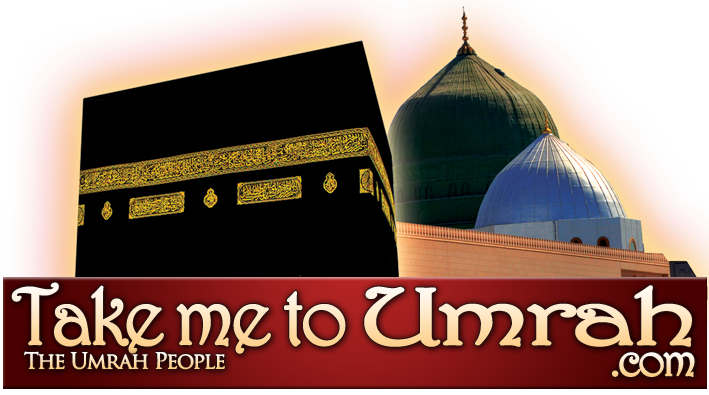
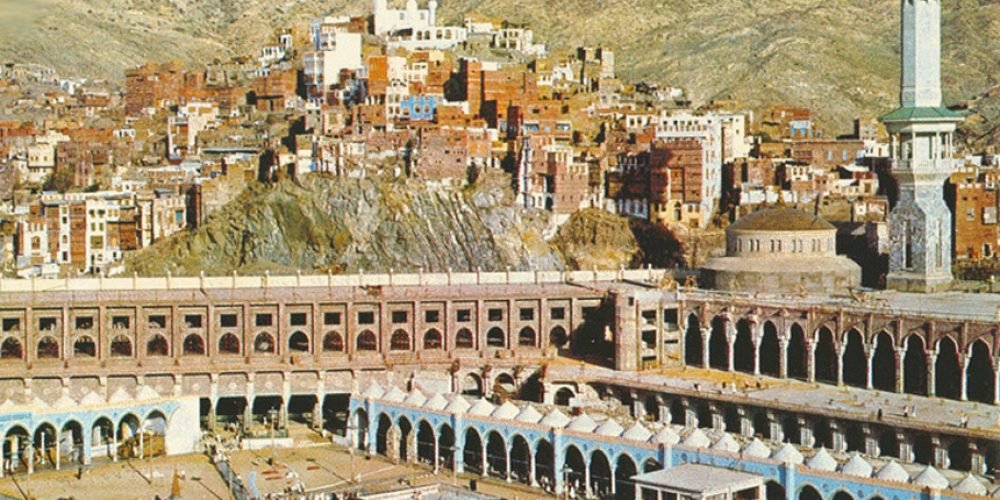
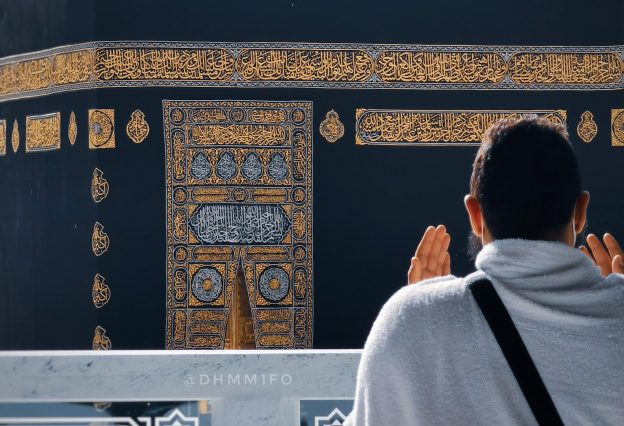
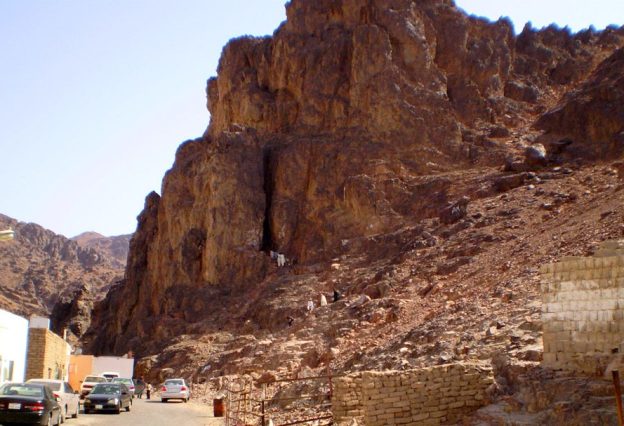
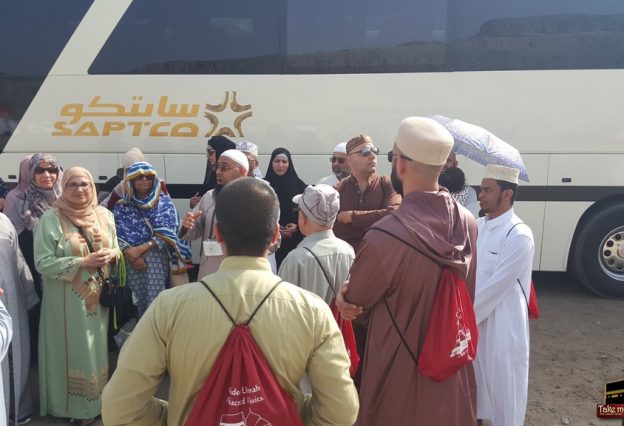
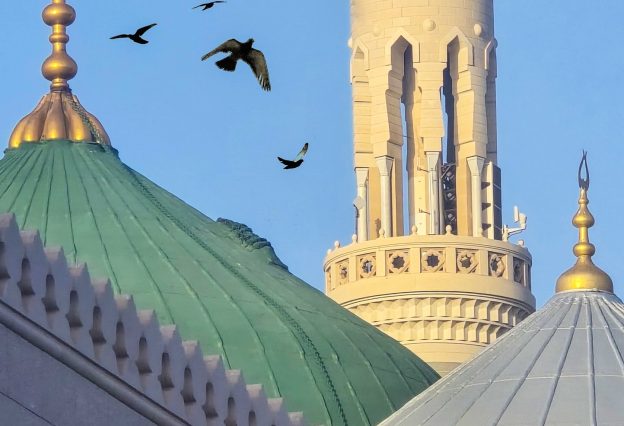
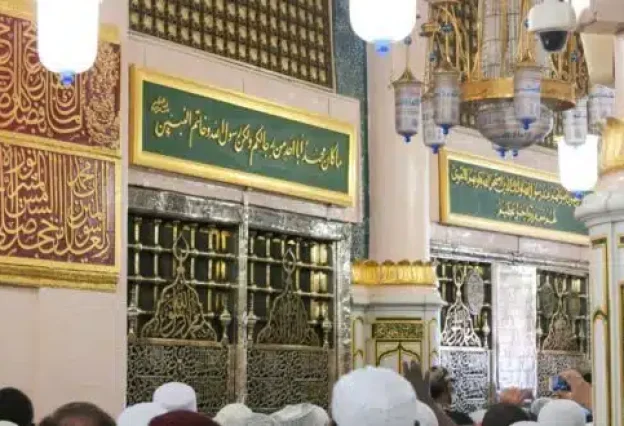
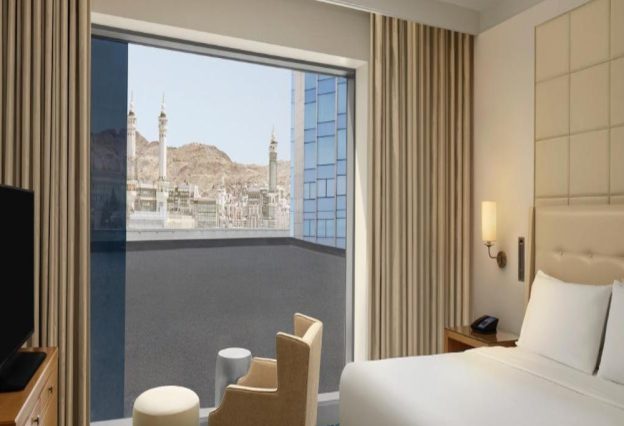
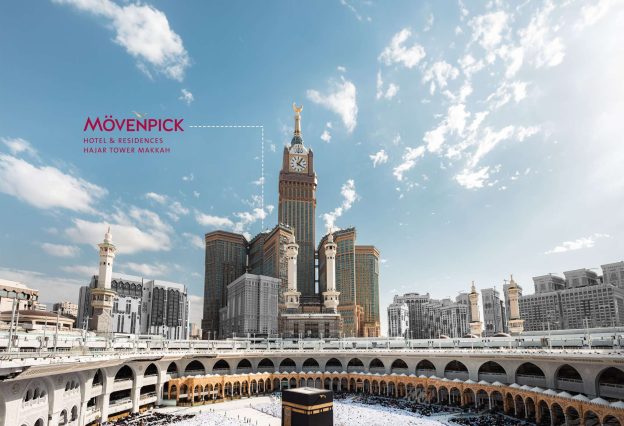
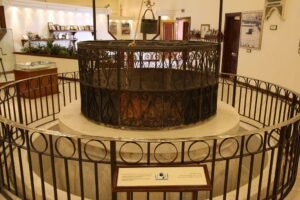
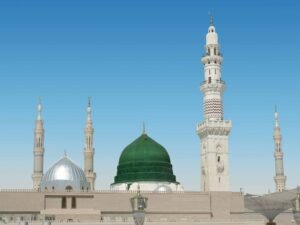
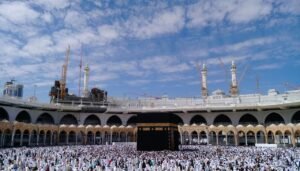
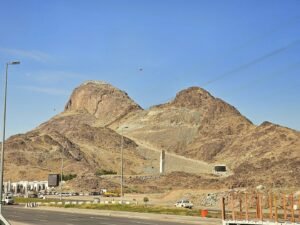


Every year my husband and I been going with you Umrah. We enjoy it a lot. Can't wait to go again Mar/2013. Insha Allah.